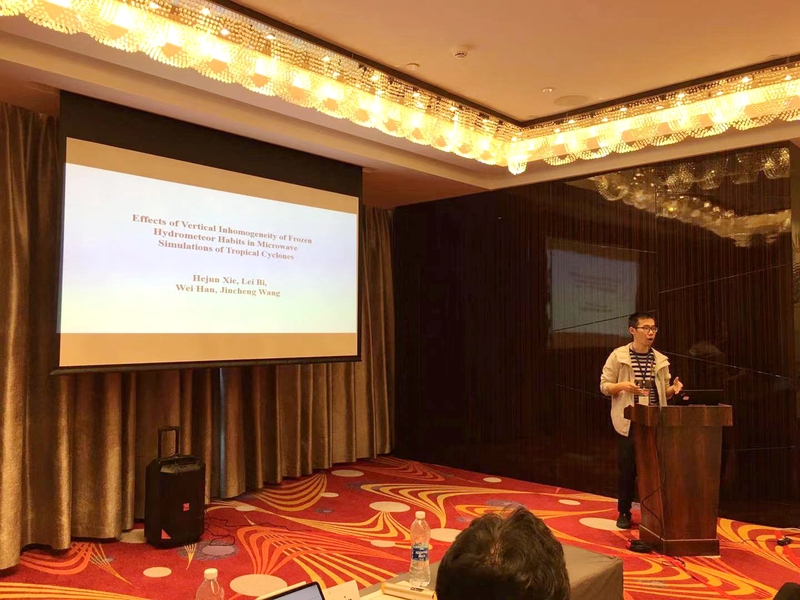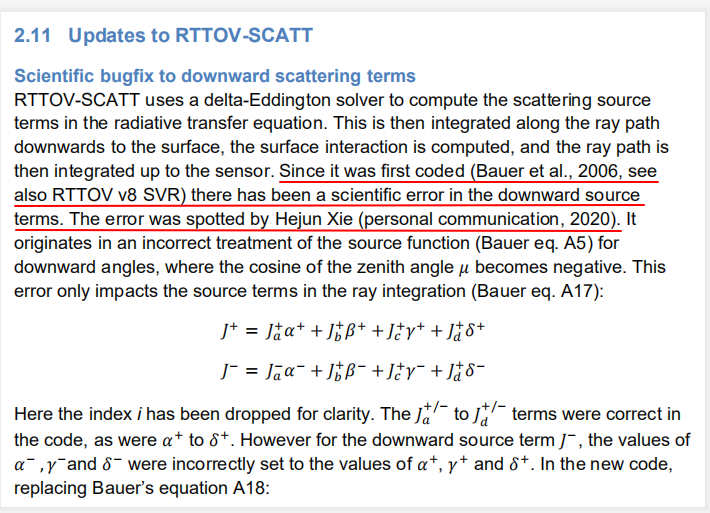Editor: 邵丹蕾 Author: Lu Xiaohong, Ni Yining Time: 2020-12-02 Number of visits :302

Xie Hejun received his Bachelor’s degree from the school of earth sciences, Zhejiang University in 2020 and started to pursue a PhD right after graduation.
Xie Hejun became a weather enthusiast in high school. He was always fascinated by the unpredictable weather. In his spare time, he tried to study various extreme weather by himself, from watching popular science programs on atmospheric science to visiting amateur meteorologists’ forums. After taking the college entrance exam, he did not hesitate a minute to choose atmospheric science as his major.
In the first year of his college life, Xie was steadfast and hardworking, and kept the first place in his major. In his sophomore year, he began to take third year courses and computer science courses. Associate Professor Zhu Peijun, the deputy head of the Department of Atmospheric Sciences soon noticed his outstanding performance. He was recommended to join ZJU100 Young Professor Bi Lei’s research group for scientific research training.
Developing potentials for scientific research
The first task given to Xie Hejun was to understand a literature about atmospheric radiation transmission from ECMWF (European Centre for Medium-Range Weather Forecasts), and try to improve the research method for the numerical weather predictions research in China. “Getting stared in scientific research was very painful,” Xie Hejun recalled. “A literature is only the ‘tip of the iceberg’ of lots of complicated research work. To fully understand the literature, I need to not only understand the scientific problems it discusses, but also analyze the derivation process of equations and tens of thousands of lines of codes.
Under the guidance of Bi Lei, Xie managed to complete the task in two months. He took massive notes and shared the learning process on a technical blog. “He not only learned to apply the research methods, but also deeply understood how these research methods came from through equation derivation and analysis and even developed new methods, which was very difficult.” Bi Lei said.
Xie Hejun and Bi Lei reported the progress of the research at China Meteorological Administration(CMA). Xie's solid mathematical background, analytical thinking ability and efficient work impressed Dr. Han Wei, the deputy chief designer of Fengyun Meteorological Satellite Engineering Application System. Then Bi Lei and Han Weigave a new task to Xie, which was to develop new algorithm by combining the frontier research of electromagnetic scattering technology with the needs of numerical weather predictions in China.
To carry out the research, Xie studied electrodynamics course offered by the Department of Physics, and also the tensor analysis course offered by the Department of Mathematics.

Xie Hejun presenting at International Conference
Xie Hejun again visited Numerical Weather Prediction Center of CMA twice to learn about the frontiers of the discipline and the key requirements of developing numerical prediction system. He attended in Electromagnetic and Light Scattering conference and Photonics and Electromagnetics Research Symposium with his progress in research. It was his first time to present at an international conference. If not affected by the outbreak of COVID-19, he would have been able to attend the 4th workshop on assimilating satellite cloud and precipitation observations for NWP in the UK.
First paper published in top journal
In his senior year, Xie completed the new tasks given by Bi Lei and Han Wei. For the microwave instrument carried by Fengyun-3 meteorological satellite, Xie Hejun modified the program to take into account the inhomogeneity of ice particle properties in the vertical direction of clouds in the observation simulation, and found that inhomogeneity had a significant impact on the simulation results. At the same time, this new feature also helps to improve the rationality of the simulation, breaking through the tradition of using a single ice crystal particle shape for simulation in this field. Based on his work, Xie has submitted his first paper to a top journal- Journal of Geophysical Research: Atmosphere. The paper was revised twice and finally published. The reviewer thinks highly of the paper and made the comment that "It will provide a significant contribution in the field of scattering radiative transfer".
Correct ECMWF algorithm errors
Xie's paper refers to the RTTOV-SCATT model developed by the European Meteorological Satellite Organization (EUMETSAT). When he was revising the paper, he accidentally found two errors in RTTOV-SCATT. RTTOV is widely used in numerical weather predictions for many countries, including ECMWF, the UK Met Office, the Japan Meteorological Agency and the CMA. He repeatedly derived the formula to test and verify it, and wrote a seven-page report about the algorithm and a sensitivity test.
One error is in the program function implementation and the other error is in the radiation transmission core module algorithm of the cloudy and rainy areas. The latter was undiscovered for 16 years, and the data generated by this erroneous algorithm may also contain errors. Xie reported the errors to Dr. Alan Geer, an internationally renowned expert from ECMWF and the author. Alan Geer found his research notes from many years ago and derived the formula to confirm Xie's findings.

Alan Geer noted in the algorithm correction sensitivity test report that the algorithm error was found by Xie Hejun.
“My supervisor Prof.Bi helped me a lot. He often reminds me that only know how to use the software to generate experimental data is not enough. Fundamental research is the core to the development of science and technology. Only if we further understand the core technology can we make creative work. In the future, I would like to dedicate my career to the research and the development of numerical weather predictions" Xie said.
Due to the rapid development of computer, satellite observation and information technology, numerical weather prediction has a broad research prospect. Xie Hejun, who is now a PhD candidate still supervised by Bi Lei has begun a new research project to combine the electromagnetic scattering technology with numerical weather predictions to develop radar observation operators.
